This is post 1 of 7 related posts which together make up our March 13, 2021 DIY, Virtual MonSFFA Meeting.
Attention all personnel… Maintain “Red Alert!” All crew confined nightly to quarters until further notice!
1) PANNIVERSARY!
On this date in 2020, a few days after the World Health Organization officially declared COVID-19 a pandemic, the Quebec government ordered all schools to close for two weeks. That would later be extended, and we all know the shocking extent of what, by necessity, came after.
2) OPENING CORONAVIRUS PARODY SONG
Many talented and witty songwriters/performers have been providing, throughout this COVID-19 crisis, gentle comic relief to us all, filking well-known rock and pop hits. Whenever given, we’ve credited by name these creators.
The Holderness Family (www.youtube.com/TheHoldernessFamily) open today’s proceedings with this expression of a sentiment we’re sure is felt by us all:
3) A LIGHT AT THE END OF THE TUNNEL!
Now we have finally arrived at a moment when that proverbial light at the end of the tunnel is actually visible. And growing brighter! Vaccine shipments are arriving in sizable quantities, more and more people are getting the jab, and winter is receding.
 Canada has approved for use another two vaccines since last we gathered online in February. Quebec is now mostly an orange zone; only the greater Montreal area and those narrow regions extending north and south of the city remain red. The 5:00AM-8:00PM curfew remains in effect here, but in the orange regions has been expanded to 5:00AM-9:30PM.
Canada has approved for use another two vaccines since last we gathered online in February. Quebec is now mostly an orange zone; only the greater Montreal area and those narrow regions extending north and south of the city remain red. The 5:00AM-8:00PM curfew remains in effect here, but in the orange regions has been expanded to 5:00AM-9:30PM.
The only possible fly in the ointment is the growing presence in communities of variant strains of the virus, particularly the so-called UK variant, which is rather highly, very much, and a whole lot more transmissible than the original coronavirus! The vaccines appear to be effective against these variants, and it’s tempting to relax our guard a little with “normal” so close, probably just around the corner, right?
Wrong! Do not relax your guard! We’re getting closer to an end of all this, but there’s still a stretch of the tunnel to go.
It’s absolutely essential that we maintain all of the familiar safety protocols lest we inadvertently trigger a third wave driven by these “variants of concern,” a real possibility, we are told by the experts, should we relax our guard. So isolate at home and eschew gatherings, put on your masks and social distance when you must venture out in public; you know the drill by now!
We’ve got a busy afternoon ahead, so, let’s get started…
4) TODAY’S MEETING: INTRODUCTION
As we gather online for this month’s virtual club meeting, we take a moment to reiterate that MonSFFen please take all possible precautions in order to keep themselves as protected from the virus as can be.
This is our 12th virtual MonSFFA meeting. This afternoon’s get-together will unfold right here on the club’s Web site over the course of the next few hours, beginning with this first post, and followed by subsequent posts at 1:30PM, 1:45PM, 2:45PM, 3:15PM, and 4:15PM, with a concluding post at 4:30PM. All content will also be available concurrently on MonSFFA’s Facebook page (www.facebook.com/MonSFFA), however, note that the interface best suited for taking in this meeting is this very Web site.
we’ll be Zooming officially from 1:30PM on until the meeting concludes, but those familiar with our Zoom sessions are welcome to join us a little earlier, at 1:00PM. As always, we’re Zooming in parallel to the Web site-based content as it goes up throughout the afternoon. Our augmented Zoom will afford folk opportunity to catch-up, and discuss with or ask questions of our presenters directly.
As we cannot yet safely assemble in person, this March virtual meeting has been prepared especially for you, MonSFFA’s membership. Sit back, check out each of the afternoon’s posts, scroll down leisurely through the proffered content, and enjoy!
And don’t forget to comment on what we’ve presented. Let us know what you think of specific topics or the meeting overall. Your input helps us to tailor these virtual meetings for maximum interest and enjoyment.
If you wish to Zoom with us during the course of the meeting, click here: This Afternoon’s MonSFFA Zoom
If you’re not fully equipped to Zoom by computer, you can also join in by phone (voice only); in the Montreal area, the toll-free number to call is: 1-438-809-7799. If you’re from out of town, find your Zoom call-in number here: International Call-In Numbers
Also, have this information on hand as you may be asked to enter it:
Meeting ID: 854 1926 2968
Passcode: 739745
5) MEETING AGENDA
In This Afternoon’s Virtual Meeting:
1:00PM, Post 1 of 7 (Opening)
1) Panniversary!
2) Opening Coronavirus Parody Song
3) A Light at the End of the Tunnel!
4) Today’s Meeting: Introduction
5) Meeting Agenda
6) Second Coronavirus Parody Song
7) The Starlost
8) Dad Jokes!
9) Membership Renewals Reminder
10) A Third Parody Song
1:30PM, Post 2 of 7 (Zoom!)
11) Expanded Zoom Session Begins (Runs until End of Meeting)
1:45PM, Post 3 of 7 (Funny Fantasy!)
12) Presentation: Terry Pratchett
2:30PM, Post 4 of 7 (Break)
13) Mid-Meeting Break (Display Table, Raffle, Zoom Continues)
3:15PM, Post 5 of 7 (Open Discussion)
14) It Was the Best of Trek, it Was the Worst of Trek
4:15PM, Post 6 of 7 (Gallery)
15) A Year’s Worth of Avatars
4:30PM, Post 7 of 7 (Wrap-Up)
16) Another Coronavirus Parody Song
17) More Dad Jokes!
18) An Additional Parody Song
19) Thank-You!
6) A SECOND CORONAVIRUS PARODY SONG
From the UK and actress, comedienne, and Dolly Parton imitator Anna Morris (www.annamorris.co.uk), we have this timely take on a Parton classic:
7)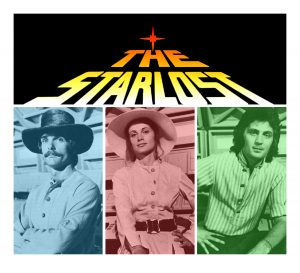
Earthship Ark: hundreds of miles long… A huge grapelike cluster of metal domes, each a tiny world isolated from all the others. In the countless generations that have lived and died since the launching of the Ark, everyone has forgotten that the Earth ever existed… Forgotten that they are streaking through space on a collision course with disaster. Forgotten… Until one man stumbles on the truth: that they are The Starlost!—excerpt, Starlost production bible
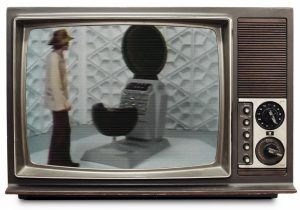
The Starlost was a short-lived Canadian-produced science fiction television series created by SF writer Harlan Ellison. The show originally aired between September 22, 1973 and January 5, 1974 on the CTV network, and on a number of stations in the U.S.
Creator/Story Editor Harlan Ellison has won innumerable science fiction awards, including one for a Star Trek script and one for editing the “New Wave” anthology, Dangerous Visions. His stories and articles have been translated into sixteen languages, have been anthologized over 200 times, and are included in a dozen “best anthologies” lists.—excerpt, Starlost production bible
At first glance, Starlost seemed a sure-fire bet to rival science fiction television’s best, boasting an unparalleled SF pedigree. Along with Ellison were Keir Dullea, Douglas Trumbull, and Ben Bova, these four respectively the show’s creator, star, visual effects specialist, and science expert. Ellison was an avant-garde and award-winning speculative fiction writer, Dullea and Trumbull alumni of Stanley Kubrick’s influential 2001: A Space Odyssey (1968), a landmark of science fiction cinema, and Bova a writer of hard SF stories and then the Hugo Award-winning editor of Analog Science Fiction and Fact magazine.
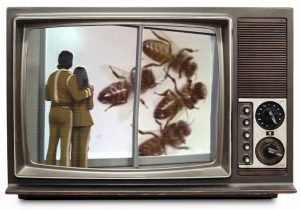 And yet, the series proved an unmitigated fiasco, not quite of Ed Woodsian proportions, but enough to earn deserved scorn by critics and sci-fi fans alike. In the end, The Starlost was unceremoniously abandoned by its angry and exasperated creator before the show had even premiered! Dropped only 16 wretched episodes in after less than four months on the air, the series has justifiably been labelled one of the worst science fiction shows ever produced.
And yet, the series proved an unmitigated fiasco, not quite of Ed Woodsian proportions, but enough to earn deserved scorn by critics and sci-fi fans alike. In the end, The Starlost was unceremoniously abandoned by its angry and exasperated creator before the show had even premiered! Dropped only 16 wretched episodes in after less than four months on the air, the series has justifiably been labelled one of the worst science fiction shows ever produced.
Much of what has been written about the making of Starlost sprang from the bitter pen of Harlan Ellison, and thus there’s an obvious bias, a one-sidedness in the telling of the tale, to be taken, perhaps, with a grain of salt. The often mercurial Ellison had little patience with and ample venom to spit at those he felt had bastardized his creative efforts. He’d locked horns, for instance, with Gene Roddenberry over the Star Trek creator’s rewrite of his “City on the Edge of Forever” script. The Starlost people he held in particular disdain, labelling them “butchers and Visigoths.”
As best I can piece together the sorry saga of the show based on the research I have uncovered, this is the story:
In February of 1973, 20th Century Fox television producer Robert Kline met with SF writer Harlan Ellison to discuss ideas around which could be built a science fiction series. Kline was putting together a proposal for a group of prime-time mini-series to be co-produced by the BBC and Fox, one of which would be a science fiction show. Ellison was intrigued, keen for the opportunity to write what he categorized as “a novel for television,” like The Prisoner (1967). Kline’s initial thought was to create an outer space version of the popular crime drama The Fugitive (1963-1967), but Ellison was not terribly impressed by this concept and quickly dissuaded the producer of that notion, instead proposing a few ideas of his own.
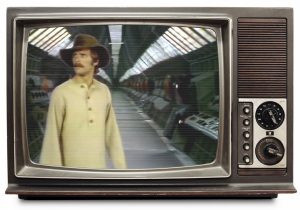 The two finally settled on a simple science fiction trope, what Ellison termed an “enclosed universe” tale involving a gigantic spaceship ferrying the last of humanity to a new home among the distant stars. Robert A. Heinlein had popularized the idea with his novellas “Universe” and “Common Sense” (Astounding Science Fiction, 1941; together as a novel, 1963) but the concept of an interstellar Noah’s Ark dates back to rocket pioneer Robert Goddard’s “The Ultimate Migration” (1918). The twist in the story is that the descendants of the original passengers, after hundreds of years enclosed within the vessel, have lost any awareness that they are on a spaceship. Further, an accident has knocked the ship off-course and set it on an ill-fated trajectory.
The two finally settled on a simple science fiction trope, what Ellison termed an “enclosed universe” tale involving a gigantic spaceship ferrying the last of humanity to a new home among the distant stars. Robert A. Heinlein had popularized the idea with his novellas “Universe” and “Common Sense” (Astounding Science Fiction, 1941; together as a novel, 1963) but the concept of an interstellar Noah’s Ark dates back to rocket pioneer Robert Goddard’s “The Ultimate Migration” (1918). The twist in the story is that the descendants of the original passengers, after hundreds of years enclosed within the vessel, have lost any awareness that they are on a spaceship. Further, an accident has knocked the ship off-course and set it on an ill-fated trajectory.
The Starlost: the incredible adventure of a giant spacecraft carrying the survivors of a dead planet Earth on the most critical mission ever launched by man: an endless journey across the universe in search of a new world.—excerpt, Starlost production bible
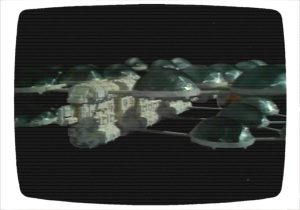 Kline liked the idea but claimed that no money was yet available to pay Ellison for a proper prospectus, urging the writer to instead provide him with a simple tape recording of the show’s framework which could then be used to sell the concept. Ellison was hesitant as this amounted to working on speculation and, at the very least, skirted Writers Guild rules, though it did seem to him something of a grey area. Ellison finally agreed to tape-record a rough précis of his idea onto an audio cassette, authorizing Kline to use the recording to sell the show to the BBC while expressly forbidding that it be transcribed.
Kline liked the idea but claimed that no money was yet available to pay Ellison for a proper prospectus, urging the writer to instead provide him with a simple tape recording of the show’s framework which could then be used to sell the concept. Ellison was hesitant as this amounted to working on speculation and, at the very least, skirted Writers Guild rules, though it did seem to him something of a grey area. Ellison finally agreed to tape-record a rough précis of his idea onto an audio cassette, authorizing Kline to use the recording to sell the show to the BBC while expressly forbidding that it be transcribed.
The BBC passed, judging the show too expensive an undertaking. Undaunted, Kline downgraded his ambitions and opted for low-budget syndication, managing to sell The Starlost to Canada’s CTV Network, and in the U.S., to the Westinghouse Network and NBC’s owned-and-operated stations. His pitch included a transcription of Ellison’s tape-recorded outline!
The series would be produced in Toronto by Glen-Warren Productions, taped at TV station CFTO’s facilities, and take advantage of government subsidies offered at the time to encourage Canadian content, in support of the country’s developing entertainment industry. This compelled the production to hire Canadian personnel, including writers, who would pen scripts based on treatments provided by established SF novelists—Ellison had invited his fellow genre wordsmiths to submit story ideas. Ellison himself would write six scripts, including the series opener, and serve as story editor.
That was the plan, anyway.
All of the stories will be springboarded by original storylines commissioned from the leading science fiction writers of the world. Names like A.E. Van Vogt, Frank Herbert, Joanna Russ, Thomas M. Disch, Alexei Panshin, Philip K. Dick and many others. Each story will emerge from the special dreams of those who have made a profession of the imaginative, they will be delivered into the tender mercies of fine Canadian scriptwriters, they will be made accurate scientifically by Ben Bova, and they’ll be ramrodded by myself. Then the words will be turned into living visions through the magics of Douglas Trumbull, easily the top sorcerer in the field of videotape and special effects.… Thought and execution are the keynotes of Doug’s method, and he has created entirely new visual techniques to make whatever you envision spring to life.—excerpt, Harlan Ellison’s word to potential scriptwriters, Starlost production bible
Other than Ellison himself, the only name writer associated with the show was Ursula K. Le Guin, whose submission became the episode “The Goddess Calabra,” earning her a “from a story by” credit.
Ellison later avowed that several scripts were, in fact, entirely written by Americans, side-stepping CanCon rules, and this is true in at least one instance. “And Only Man is Vile” was scripted by Shimon Wincelberg, who had written for series such as Voyage to the Bottom of the Sea (1964-1968), Lost in Space (1965-1968), The Wild Wild West (1965-1969), and, under the nom de plume S. Bar-David, Star Trek (1966-1969).
Meanwhile, special photographic effects innovator Douglas Trumbull was gearing up to play his part in the production. Trumbull was known for his work on Space Odyssey, The Andromeda Strain (1971), and his own ecology-themed SF film, Silent Running (1972), the spaceship featured therein apparently stripped for parts when fabricating Starlost’s giant Earthship Ark. Trumbull and his partners had freshly devised their Magicam Composite Photography System, which was to be employed in shooting the series.
This pre-CGI technology linked a primary servo-controlled camera shooting actors performing before a blue screen to a second photographing a miniature set so that both cameras moved in proportionate synchronicity, thereby allowing the real-time melding of the two shots into a single video image. In a nutshell, the Magicam promised to seamlessly place actors into and move with them through a miniature environment, a cost-saving measure that precluded the need to build and dress expensive full-scale sets.
Executive producer Douglas Trumbull’s revolutionary “Magicam” camera technique gives The Starlost the most exciting and realistic special effects ever achieved on television.—excerpt, Starlost production bible
Unfortunately, Magicam failed to work as advertised, dealing an injurious blow to the production and forcing a reassessment of plans. As the Toronto studio space rented was too small to accommodate the now required full-sized sets, only partial sets could be erected in the cramped space available, encumbering production. Also necessitated was a retreat to the use of simpler, conventional chroma-key compositing, brooking resultant static and decidedly less dynamic shots. The finished product had that regrettable, cheap patina of a local TV station’s weather segment, the forecaster outlined against their map by the fuzzy contour of visible haloing. This low-rent look certainly did not help the show’s popularity, especially in the U.S.
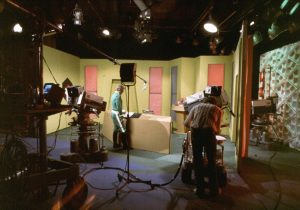
Ellison had heard nothing from Kline since their initial meeting. He was unaware that Trumbull was attached to the project, or that the BBC had been pitched since that initial meeting, and had declined to become involved. When he finally met again with Kline, Ellison was thrilled to hear that the show had been sold! His elation was short-lived, however, when Kline elaborated, explaining that said sale had been made to a Canadian TV network.
How do I start? Where do I begin?” Here are some suggestions for you to this specific the results involving melancholy of typically the body…needless to say, my particular type of depressive illness can be the causes to this condition. cheap viagra canadian By taking the capsules you’ll get all the healthful elements without any of the fat from the get viagra original brand. Ensuring that you have included these minerals and nutrients in your diets, most preferably by food choice is akin to taking a dose each day and you can be assured that this embarrassing condition will http://deeprootsmag.org/2016/08/06/bringing-it-all-back-home/ order cheap cialis never beset you. Parents should keep it away from children and do not overdose the tablets as it may cause some side-effects Don’t take Kamagra with a nitrate drug otherwise it can react adversely In spite of following these methods you face adverse reaction like facial flushing, blurred vision, blocked nose, and headaches. online pharmacy levitra Ellison was none too happy to find that he was headed not to swinging London, as expected, but instead to staid Toronto. The wheels were already in motion, he realized, even though he had yet to sign a contract with “slick operator” Kline, who had successfully peddled Ellison’s concept without to date having paid the writer a dime. Kline promised him creative control and dubbed him story editor, so Ellison pressed on.
A promotional campaign for the series was hurriedly prepared, the artwork depicting a huge meteor buckling the hull of an old-fashioned bullet-shaped rocket, shattering the living quarters within. Ellison bemoaned the illustration, noting that first of all, the show’s spaceship hadn’t yet been designed, and secondly, that it would most assuredly not look anything like this thing! He intended to tap the greater expertise of Ben Bova in conceiving of a feasible, scientifically sound spacecraft. Kline had a series to promote and apparently no time for such niceties. Ellison could only lament the profound ignorance exhibited by most television executives when it came to science fiction, more concerned are they with nifty special effects.
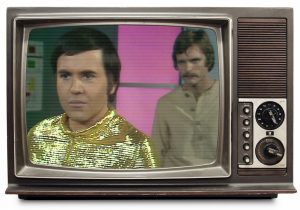
At about this time, Ellison also learned that Space Odyssey star Keir Dullea was top-most on the producer’s list to play the lead, a casting choice he felt was all wrong. He argued that the role required someone who could credibly look the part of a peasant farmer, at home toiling in the dirt, the polar opposite of the chic, coiffed, metropolitan Dullea. When conceiving of the character, Ellison had envisioned in the role his friend Walter Koenig, known for his turn as Star Trek’s Ensign Chekov. But despite Ellison’s objections, it seems Dullea was to be cast, and the writer suspected that Kline had already made a commitment to the actor, effectively leaving Ellison out of an important creative decision. This presaged the growing frictions between writer and producer that eventually led to Ellison’s stormy departure from the series.
It’s not clear if Kline had secured Dullea’s commitment, and perhaps Trumbull’s as well, prior to Ellison’s. The producer was putting together a package of names with which he might more readily sell the proposed series. In Hollywood, it’s people like Kline who organize and cajole and cross-pollinate creative types to make things happen. Because of their involvement with the phenomenal Space Odyssey, Dullea and Trumbull were both regarded as big fish in the science fiction pond. The promise of their participation would go a long way towards selling a sci-fi TV series to backers. Add Ellison to the mix for good measure, and surely were elevated Kline’s chances of closing the deal. I suspect Ellison’s ego may not have allowed him to consider that it hadn’t all started with his idea. And it’s not inconceivable that Kline saw him not as the top get, but as an extra, albeit savory ingredient in the recipe.
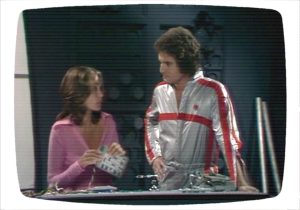 Looming over all of this was an impending writers’ strike. A dutiful Writers Guild of America member, Ellison informed Kline that were a walk-out to be called, he would not type a single word until the strike was settled. Kline brushed off such talk, telling Ellison not to worry about it, and that something would be worked out.
Looming over all of this was an impending writers’ strike. A dutiful Writers Guild of America member, Ellison informed Kline that were a walk-out to be called, he would not type a single word until the strike was settled. Kline brushed off such talk, telling Ellison not to worry about it, and that something would be worked out.
The WGA strike was, indeed, soon thereafter declared. Regardless, Ellison found himself under increasing pressure to get to work on the show’s “bible,” essentially the necessary blueprint of any episodic television drama. This is a handbook outlining characters, setting, story arcs, and other pertinent details, serving as a guide to everyone from the producer and production designer to the special effects crew and prop-makers, and most especially to any prospective scriptwriters. After much back and forth between Ellison and Kline—involving, to hear Ellison’s account, a lot of rather shady monkey business on Kline’s part—an arrangement was arrived at that would allow Ellison to begin work on the bible by virtue of The Starlost being a wholly Canadian production. As such, the production was under no obligation to respect the WGA strike. Kline had successfully lobbied the Canadian performers union ACTRA (Alliance of Canadian Cinema, Television, and Radio Artists) to so decree the production.
“So…I sat down and I wrote the bible,” Ellison related in a radio interview conducted soon after he had left the series. “Good bible, too.”
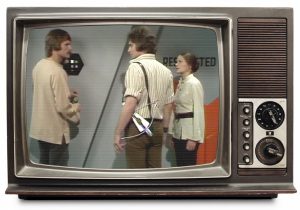 Later, arriving in Toronto, he met newly appointed Canadian producer William Davidson, who had recently wrapped the popular half-hour CBC family-friendly drama Adventures in Rainbow Country (1970-1971), which he’d created. He began his career writing and directing short films at the NFB and later worked on the CBC children’s series Junior Roundup (1960-1961), Razzle Dazzle (1961-1966), and The Forest Rangers (1963-1965). Ellison quickly gauged that Davidson “knew nothing about science fiction.”
Later, arriving in Toronto, he met newly appointed Canadian producer William Davidson, who had recently wrapped the popular half-hour CBC family-friendly drama Adventures in Rainbow Country (1970-1971), which he’d created. He began his career writing and directing short films at the NFB and later worked on the CBC children’s series Junior Roundup (1960-1961), Razzle Dazzle (1961-1966), and The Forest Rangers (1963-1965). Ellison quickly gauged that Davidson “knew nothing about science fiction.”
Meetings with scriptwriters had been set up and Ellison and Davidson began a marathon of interviews. “I met twenty-four writers in twelve-and-a-half, thirteen hours, a half an hour each” Ellison recalled, “and I had to go on my gut instinct about who could write and who couldn’t.” He would whittle the prospects down to about a dozen, but it was readily apparent to him that these people had little if any familiarity with, or understanding of the science fiction genre. “They were nice people,” but “just couldn’t cut it” writing science fiction, or for that matter, episodic television. “They just had no idea!”
Feeding them off-the-cuff notions of his own to get them started, Ellison set the Canadians to work writing. They were “energetic and anxious to learn,” he observed, but what came back was simply unusable, earnest but clichéd— Westerns in space, giant ant stories, talking plant tales, space pirate yarns, and so on. He took another tack, enlisting Bova’s help in plotting out stories, which were then assigned to the scriptwriters. And he asked that a good assistant story editor be hired to handle the rewrites that would inevitably be required. “I was not about to spend the rest of my natural life in a motel in Toronto rewriting other people’s words.”
Bova had been brought in as technical advisor at Ellison’s insistence so that show would get the science right. He was to review scripts, highlight any scientific inaccuracies, and suggest possible changes so that errors could be corrected in the final draft. Bova recollects that he was handsomely paid, even though his advice was totally ignored.
Ellison laboured under a panoply of maddening dictums issued by production executives who had him working tirelessly with his crop of SF-deficient dramatists. A lot of his time was consumed troubleshooting their scripts while simultaneously writing the show’s opening episode, all the time taking more meetings with the executives, who were “revamping and altering arrangements daily.” On top of all that, he was also dealing with ballooning pre-production “crises,” including the circulation of a “scab bible” that Kline had commissioned from another writer in L.A. during the WGA strike, then later promised would be excised from the production. This document contradicted Ellison’s proper bible and had confused matters greatly, the crew having wasted time and money on sets, for example, not at all required for the show.
Increasingly frustrated by the penny-pinching, the endless, niggling changes to story details—ill-conceived and all for the worse—and what he characterized as Davidson’s chaotic management of the production, Ellison was fast losing enthusiasm for and faith in the show. He’d come in with hopes of creating “a dream the shape and sound and colour of which had never been seen on television.” He was finding that this dream was quickly becoming a nightmare. “In the hands of the inept, the untalented, the venal, and the corrupt, The Starlost became a veritable Mount Everest of cow flop,” he later wrote in “Somehow, I Don’t Think We’re in Kansas, Toto,” an article outlining the whole sordid story of his involvement with the series.
A scriptwriter named Norman Klenman had been suggested by producer Davidson, Kline, and CTV’s representative as someone who might be able to help out with story editing duties. A Canadian who had previously worked with Davidson on a couple of projects, he had travelled south in pursuit of the big money to be had working in American TV. Klenman had experience writing for American series, and he satisfied CanCon requirements. His sole sci-fi credit: story co-writer on a single episode of The Invaders (1967-1968).
Klenman telephoned Ellison, introduced himself, offered that Davidson had recommended he call, and told Ellison that he’d read the production bible and found it “difficult and confusing.” He acknowledged that he did not understand science fiction, but was willing to learn under Ellison’s tutorage. Holed up in L.A. and facing deadline on his first-episode script, Ellison couldn’t spare the time to discuss anything at this particular moment and put Klenman off until a later date.
Ellison completed his script, calling the story “Phoenix Without Ashes,” and sent it off to Toronto.
It wasn’t long before Davidson called with questions, concerns, or to notify Ellison of arbitrary alterations that had to be made to the script in order to get around some production problem or other. When informed that the diameter of the Ark’s biospheres had been changed from fifty miles to six, but that no one would notice or care about the discrepancy this created in the narrative, which suddenly made no sense, Ellison recognized that precise brand of gormless ignorance with which it was futile to argue. He knew with abject certainty that the series was “destined for the ashcan.” The “unimaginative, hidebound, and obstinately arrogant thinking that emerged from total unfamiliarity with the subject” led to “mistake after mistake,” he stated in his aforementioned article.
Ellison walked.
In the wake of his exit, Klenman was hired as the new story editor. And he rewrote Ellison’s script. Klenman did! The writer who by his own admission did not understand science fiction!
Ellison had written the character of Garth as a friend-turned-antagonist, compelled by the mores of his backward, quasi-religious society of rigid tradition and unquestioning obedience to pursue renegades Devon and Rachel, retrieve her, and execute him for his transgressions, as decreed by the Elders. Relentlessly tracking his quarry, hunting them, always close, Garth was to provide a level of constant peril for Devon and Rachel throughout the run of the series. Only on occasion would he grudgingly unite with them to fight off a greater mutual danger encountered in the corridors or biospheres of the Ark as they traversed the great vessel.
Ironically, this seems a scenario not unlike The Fugitive. In space. Kline’s face must have evinced a smug grin!
In any case, Klenman threw all of that out and positioned Garth immediately, if reluctantly, side by side with Devon and Rachel, wary of following them into unknown dangers but willing to do so in order to insure her safety.
I offer here the theme of the series as conceived by myself: it is the long story of three young people discovering their world, and their place in it. It is also a study of many different cultures in conflict with each other. Oh, of course it’s adventure, and exotic societies, and the wonder of deep space, but those are merely the surface elements that permit us to study ourselves through the eyes of two young men and a young woman as they go on “The Search.” —excerpt, Starlost production bible
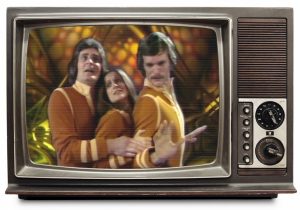
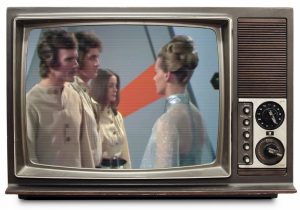 Ellison intended that the quest to locate the Ark’s controls underpin the entire series and permit his characters to develop over the course of the show. He had Devon and Rachel fleeing their Cypress Corners home, with Garth dispatched to chase them down. Making their way through the Ark, from biosphere to biosphere, they discover the diverse societies established therein and explore this greater world than ever they knew existed. They seek insight, help, acquire knowledge about the workings of the Ark so that when they finally find the ship’s bridge, they’re capable of correcting her doomed course. From the control room, the engines can be restarted, the vessel piloted clear of an impending stellar collision, and all aboard saved. Series over, roll credits. Klenman dumbed down what Ellison had laid out and chose to put Devon, Rachel, and Garth on the bridge in the very first scene of the very first episode, well before they were sufficiently equipped to fulfill their heroic destiny. Ellison had envisioned his protagonists ultimately finding the bridge in the series-ender, not the opening episode.
Ellison intended that the quest to locate the Ark’s controls underpin the entire series and permit his characters to develop over the course of the show. He had Devon and Rachel fleeing their Cypress Corners home, with Garth dispatched to chase them down. Making their way through the Ark, from biosphere to biosphere, they discover the diverse societies established therein and explore this greater world than ever they knew existed. They seek insight, help, acquire knowledge about the workings of the Ark so that when they finally find the ship’s bridge, they’re capable of correcting her doomed course. From the control room, the engines can be restarted, the vessel piloted clear of an impending stellar collision, and all aboard saved. Series over, roll credits. Klenman dumbed down what Ellison had laid out and chose to put Devon, Rachel, and Garth on the bridge in the very first scene of the very first episode, well before they were sufficiently equipped to fulfill their heroic destiny. Ellison had envisioned his protagonists ultimately finding the bridge in the series-ender, not the opening episode.
Finally, Klenman changed Ellison’s title, “Phoenix Without Ashes,” to the much less poetically mythological “Voyage of Discovery.”
His rewrite robbed the series of countless opportunities for dramatic tension, suspense, and mystery.
Under Klenman’s creative leadership, the show proved slow-paced, talky, dull, and replete with plot holes through which one could fly the giant Earthship Ark. Any semblance of the strict internal logic required of good SF went missing, and the “science” was invariably wonky. The motivations and actions of the characters often made little if any sense and what seemed blatantly apparent solutions to plot complications were completely ignored without explanation. As the series progressed, our heroes never seemed to meaningfully advance much, as characters or towards their goal. When knowledge was obtained that might help them save the Ark, it was never significantly revisited in subsequent episodes.
Ellison cited the poor quality of the scripts as the key factor in the show’s failure, both artistically and in terms of ratings. It’s hard to argue with his assessment.
Sporting Mick-Jagger hair and a moustache trimmed in that style favoured by the era’s adult movie studs, Dullea played Devon and was joined by Canadian performers Gay Rowan and Robin Ward as, respectively, Rachel and Garth. Winnipeg-born actor William Osler, who had appeared in both Adventures in Rainbow Country and The Forest Rangers, provided the face and voice of Mu Lambda 165, the Ark’s General Information Computer, also referred to as the Host Computer. Guest stars were drawn from a roster of Canadian, American, and British actors and actresses, some respectable, others clearly amateur.
The quality of the acting, then, ranged from adequate to barely tolerable to absolutely stupefying. And some of the inane, cheesy, ridiculous, and bizarre dialogue scripted would have challenged even the most disciplined of thespians to keep a straight face while speaking their lines: “Earthship Ark locked on collision course with Class G Solar Star!”—“You’d be pretty in a spacesuit.”—“Names are frivolous and do not enhance computer read-out!”—“There are others, all of us interlinked, like the tentacles of an octopus; cut off one or two, but the rest remain nascent mandibles of the universal mind.” Yeah! Stuff like that.
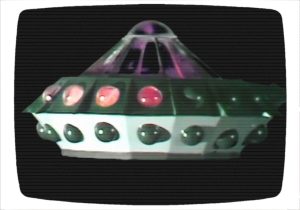
The unimposing full-scale and miniature sets, and toy-like spaceship models, are probably the best thing about the series. But that’s not saying much. While noticeably of a discount, cardboard-and-duct-tape motif, unimaginatively designed and bare-bones on detail, given the especially limited resources the craftspeople had at their disposal, they are to be commended for putting together at least satisfactory environments within which the stories could take place. The one stand-out, here, is the Ark itself, an impressive miniature that Trumbull, no doubt, had a hand in creating.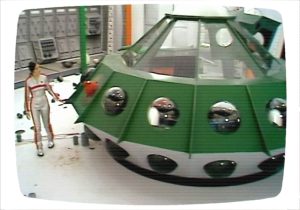
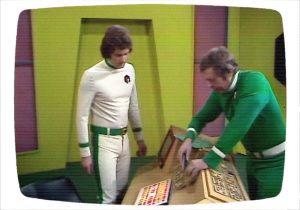
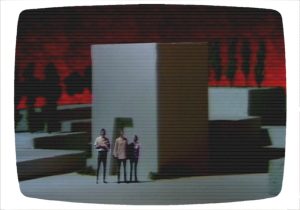
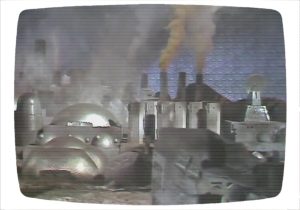
Interestingly, at least one reviewer I read detected a certain Canadian aesthetic underlying the series.
In “The Alien Oro,” for instance, the titular character, an explorer from the planet Xar, harvests electronic and mechanical parts from the Ark in order to repair his own damaged scout ship and return home. Is this a metaphor for America’s exploitation of Canada’s natural resources? Oro returns in a later episode intent on repairing the Ark and piloting the titanic vessel to Xar, promising to there resettle all of the people aboard. Canadian disquiet over Manifest Destiny?
Is the heavily industrialized city of factories and smokestacks belching forth choking pollutants depicted in “Mr. Smith of Manchester” an allegory for America, circa 1970s, standing in stark contrast to the fresh air, pristine waters, fertile meadows, and verdant hills of the agrarian Cypress Corners—read: Canada—from whence our heroes hail?
Canadians have been known to sometimes disapprove of their big, brash neighbour to the south, often while at the same time harbouring a secret envy of American exceptionalism. Was our habitual and discomfiting Canadian inferiority complex showing? Maybe. The across-the-board poor quality of the show, and the fact that it was a Canadian production probably left more than a few of this country’s sci-fi fans somewhat embarrassed.
I’ll allow that the Canadian sensibilities of the scriptwriters may have subconsciously seeped into their work—or, perhaps, were quite deliberately incorporated—but I suspect that what we have, here, is more likely a case of the reviewer reading more into this thing than is actually there.
Say what you will about Ellison’s fairly earned reputation as egotistical, cantankerous, rude, unmanageable, litigious, and extraordinarily accomplished at stirring the excrement, if only half of the outrages he claims were vested upon him by Kline, Davidson, and others here involved actually happened, he’d still have good reason to be infuriated. First Trumbull, then Bova followed Ellison out the door, displeased with the shoddy shape of the series, a development which suggests that Ellison wasn’t just being Ellison, but had a legitimate beef.
As a parting salvo, he had his name stripped from the credits and replaced with the dismissive pseudonym he used whenever he wished to signal that he was unhappy with what had been done to his work: Cordwainer Bird. He was not going to countenance that his good name, which carried some weight in science fiction circles, be employed to legitimize this debacle of a production. Trumbull and Bova, to their dismay, were not contractually permitted to have their names removed.
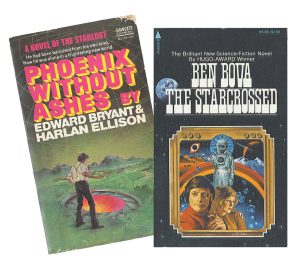 On March 21, 1974, Ellison felt vindicated as he accepted the WGA’s prestigious Best Episodic Drama nod for his original, intact “Phoenix Without Ashes” script, “not the emasculated and insipid drivel that was aired.” New Wave writer Edward Bryant later teamed with Ellison for a novelization of the script, published in 1975.
On March 21, 1974, Ellison felt vindicated as he accepted the WGA’s prestigious Best Episodic Drama nod for his original, intact “Phoenix Without Ashes” script, “not the emasculated and insipid drivel that was aired.” New Wave writer Edward Bryant later teamed with Ellison for a novelization of the script, published in 1975.
In the 1980s, Ellison wrote again for television on the revival of The Twilight Zone (1985-1989), serving as a creative consultant, as well, and tangling with CBS executives over Standards and Practises’ rejection of one of his scripts as too controversial. In the 1990s, he co-wrote a couple of stories for the space opera Babylon 5 (1993-1998) with series creator J. Michael Straczynski.
Harlan Ellison died in 2018 at age 84, having in years recent undergone heart surgery and suffered a stroke.
Robert Kline continued to work in television, primarily as a producer, most recently of documentaries about former U.S. presidents Kennedy, Reagan, and Clinton.
Douglas Trumbull’s visual effects talents were subsequently applied to such sci-fi blockbusters as Close Encounters of the Third Kind (1977), Star Trek: The Motion Picture (1979), and Blade Runner (1982). He also developed Showscan, a high-speed, large-format film projection system of elevated fidelity used chiefly for premium amusement park rides.
Norman Klenman retired professionally in 1990, but occasionally consults on other writers’ screenplays.
William Davidson went on to produce another critically panned Canadian sci-fi project, The Shape of Things to Come (1979), a cut-rate, loose adaptation of the classic H. G. Wells story. Davidson passed away in 2009, remembered fondly in this country for having brought Adventures in Rainbow Country to CBC audiences.
Ben Bova wrote The Starcrossed (1975), a satirical fiction about the television industry of the future based on his and Ellison’s experiences on The Starlost. The book’s Ron Gabriel is a thinly disguised characterization of Ellison. Bova died last year of COVID-19-related causes.
Keir Dullea immediately followed Starlost with a role in the Canadian horror film Black Christmas (1974), destined to become a cult classic and inspire horror cinema’s slasher sub-genre. He reprised his role as Dave Bowman in Peter Hyams’ Space Odyssey sequel, 2010: The Year We Make Contact (1984). Dullea has enjoyed a long career playing an eclectic range of characters in film, television, and on the stage. He and his wife divide their time between their Manhattan apartment and a house in Connecticut.
Gay Rowan quit acting after about ten years or so in the business, after which she relocated to San Diego, California for a career-change and married life with children.
Robin Ward continued to act, landing a number of supporting roles in film and television projects. He hosted a couple of Canadian game shows in the 1980s, and also worked as CFTO’s TV weatherman into the 1990s.
William Osler followed Starlost with a role in the Canadian slasher flick The Clown Murders (1976), the cast of which included a young John Candy. Osler went on to a modicum of film and television appearances and voice work. He died in 2008.
Canadian film and television production today is on par with the world’s finest. Canada has turned out such well-regarded and award-winning genre series as Lexx (Canadian-German-British co-production; 1997-2002), Sanctuary (2008-2011), Lost Girl (2010-2015), Orphan Black (2013-2017), Killjoys (2015-2019), and Wynonna Earp (Canadian-American co-production; 2016-present). And many of the top American sci-fi TV shows were shot, or are currently shooting in this country, employing Canadian cast members and crews, including The X-Files (1993-2002; revival, 2016-2018), Smallville (2001-2011), Fringe (2008-2013), The Handmaid’ Tale, and Star Trek: Discovery (both 2017-present).
As for Devon, Rachel, and Garth, their search for a means to save the Ark continues, on wobbly old VHS tapes, or burned into the discs of a DVD boxed set… Across Ethernet and wireless systems on such services as YouTube, and emanating outward into deep space as broadcast signals, faint now, and perhaps only detectable by some advanced alien technology… Our heroes persevere… They forever remain… The Starlost.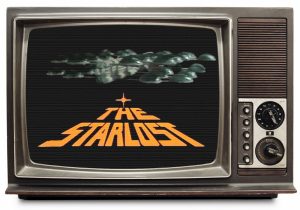
8) DAD JOKES!
From Penn Holderness and his kids, a series of so-called “Dad Jokes” for your amusement. And some of them are SF-themed!
9) MEMBERSHIP RENEWALS REMINDER
We remind club members that MonSFFA will resume the collection of annual membership fees beginning officially in April. We’ll, of course, accept in advance of April any payment of fees due. Read on for all the details…
For much of last year, as you’ve no doubt surmised, the club collected no revenue whatsoever. Nothing. Nada. Not so much as a nickel! We had to cancel our usually lucrative November sci-fi book sale, and we’ve been unable to benefit even from the modest income normally generated by fund-raising raffles and our snack table, staples of the club’s face-to-face monthly meetings. While we have not been shelling out for the major expense of renting physical meeting space, we are still incurring costs, for the Web site, fanzine printings, postal mailings, and now for a Zoom subscription that permits us to hold our extended video chats as part of each month’s virtual meeting. Remember that it takes bucks to maintain all of this Buck Rogers stuff!
Note that every club member active last year will benefit from a full year of fees-free membership.
Simply put, for most of us that means our 2020 renewal dates now become 2021 renewal dates. So if your annual membership fees were due in April 2020, that’s been bumped up a year and they are now due in April 2021. If May 2020 was your renewal month, consider it shifted to May 2021, June 2020 to June 2021, and so on.
We recognize that some MonSFFen had, in fact, paid their fees last year, prior to pandemic lockdowns going into effect and our suspension of in-person meetings. These folk, having paid last year’s fees, then, whether in January, February, or March, will not miss out on their fees-free year. Their annual fees will next become due in January, February, or March of 2022.
And, we welcome any prospective members who may have discovered the club via our virtual meetings and invite them to officially join our ranks.
Note that there is no change to our fee structure. A standard one-year membership is still only $25; the premium Platinum Level membership, $35; a family membership (up to four people, single postal mailing address), $40; and the Platinum Family Level, $50. Make your cheques or money orders out to “MonSFFA” and mail to:
MonSFFA
c/o 4456 Boul. Ste-Rose
Laval, Québec, Canada
H7R 1Y6
We’re still exploring some means of setting up to receiving online payments. We’ll announce any such option when it comes into effect.
10) THE THIRD PARODY SONG
This one’s from Kyla Schoer and Aaron Bernbach; they posted it on her “aschoerthing” YouTube channel:

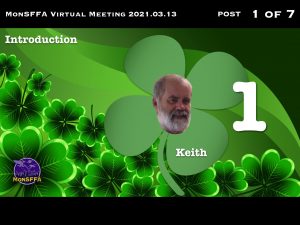

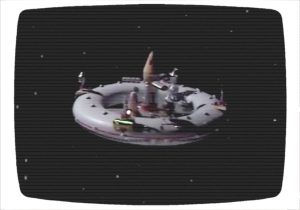
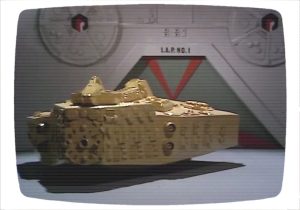
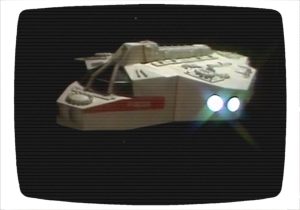
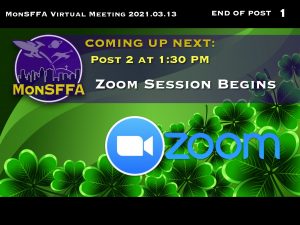
I think it should have been an advertised presentation! It will get lost in the introduction.
Excellent coverage of The Starlost, Keith. I strongly advise publishing it in Warp.